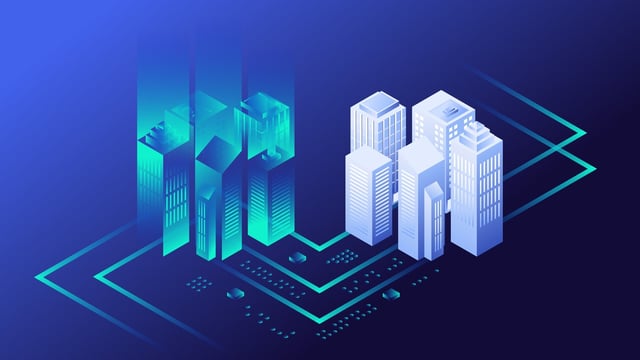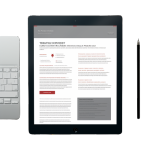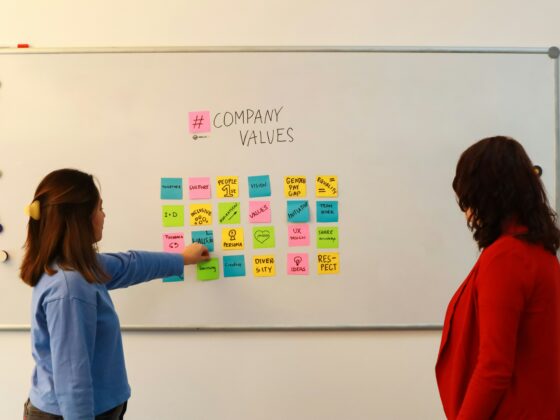
Between soaring labor costs, flat RevPAR, and the pressure to deliver brand consistency across a fragmented ownership landscape, hotel leaders are facing a near-impossible mandate: do more, with less, across more properties than ever before. That’s where digital twins come in. Matterport, a pioneer in 3D spatial data and immersive virtual modeling, is helping hotel brands streamline operations and decision-making at scale. Stephanie Lin, the company’s Vice President & General Manager – Operate, breaks down how hoteliers are using the technology to train staff, accelerate renovations, audit brand compliance remotely, and close more direct sales—all while cutting costs and improving sustainability outcomes.
What kinds of business problems are hotel brands trying to solve with digital twin technology today?
Hotel brands today face a complex balancing act: enforcing property upgrades, reducing OTA dependency, and upholding training and compliance standards, all while protecting brand equity, ensuring guest satisfaction, managing costs, and maintaining strong relationships with owners. These challenges are magnified during periods of high costs, such as rising labor and procurement expenses, and low growth, including flat RevPAR and declining international visitors. In this environment, the pressure to maximize bookings while slashing operational and capital expenses is greater than ever. Digital twin technology is proving to be a game-changer for tackling these challenges head-on. By delivering clear, indisputable visual site context, this technology streamlines communication and eliminates ambiguity. Immersive virtual tours boost booking confidence and drive direct event sales by giving potential guests and event planners a vivid, realistic preview of the property. Digital twin 4K imagery and 3D lidar technology empower design and construction teams to execute renovation projects with precision and consistency, no matter who the owner or operator may be. The benefits don’t stop there. These same digital scans are revolutionizing brand consistency inspections, allowing remote evaluations that ensure properties meet brand standards without the need for frequent on-site visits. They also enable remote staff and vendor training, reducing disruptions to hotel guests while maintaining operational efficiency. By embracing these innovative tools, hotel brands are not just navigating today’s challenges, they are setting new standards for efficiency, guest satisfaction, and long-term success.
How are digital twins influencing the way hotel leaders make investment or renovation decisions?
Digital twins are changing the way hotel leaders approach investment and renovation decisions. By providing time-stamped records of existing conditions across properties worldwide, digital twins deliver an unparalleled level of clarity and insight. The combination of 4K imagery and 3D lidar data allows leaders to visually inspect and compare properties, pinpointing exactly which areas require upgrades and prioritizing investments with confidence. The precision of 3D lidar data ensures that project teams and AEC service providers have accurate, reliable BIM and CAD drawings to inform pre-construction designs and cost estimations. This eliminates guesswork and reduces costly errors, enabling hotel leaders to make smarter, data-driven decisions. Adopting digital twins throughout the design and construction process has a direct impact on the bottom line. Hotel leaders can cut travel expenditures by up to 53% per project in turn improving sustainability outcomes, all while maintaining full visibility and control over renovations. Digital twins are not just a tool, they are a strategic advantage, empowering hotel leaders to optimize investments, streamline operations, and drive long-term success.
With the labor crunch still affecting hospitality, how are operators leveraging digital twins for onboarding and remote training?
With the ongoing labor crunch in hospitality, operators are turning to digital twins as a powerful solution for onboarding and remote training. Digital twins are enabling operators to streamline these processes without disrupting the daily operations of their properties and assets, ensuring business continuity while equipping new team members with the tools they need to succeed. Across lodging, transportation, and food & beverage, digital twins are transforming how new hires familiarize themselves with their work environments. From hotel properties and international cruise ships to aircraft layouts and even sports stadiums, this technology provides an immersive, hands-on training experience, accessible from anywhere with just a URL and an internet connection. Operators can embed training documentation, quizzes, and step-by-step instructions for tasks like room setups and maintenance directly into the virtual environment. This not only accelerates the learning curve but also ensures consistency and accuracy across teams. By leveraging digital twins, operators are addressing labor challenges head-on, creating more efficient training programs, and empowering their workforce to deliver exceptional service from day one.
What are some common misconceptions hotel decision-makers have when first exploring digital twin tech?
When hotel decision-makers first explore digital twin technology, several misconceptions often come to light. A common belief is that capturing a property is time-consuming or overly complex. However, advancements in AI and LiDAR technology have made the process remarkably simple and efficient, with tools and services available to ensure seamless capture across entire property portfolios. Another misconception is that the quality of digital twin captures may not meet the high standards required for marketing purposes. In reality, photorealistic digital models can replace traditional, costly photo shoots while delivering the immersive experiences that today’s travelers, particularly Gen Z (who represent 20% of the population and 40% of travelers), increasingly expect. Finally, some decision-makers assume that digital twin technology is only practical or beneficial for large properties. In truth, scalable solutions are available that deliver measurable ROI for hotels of all sizes, helping to drive operational efficiency, enhance guest engagement, and meet the unique needs of properties both big and small.








